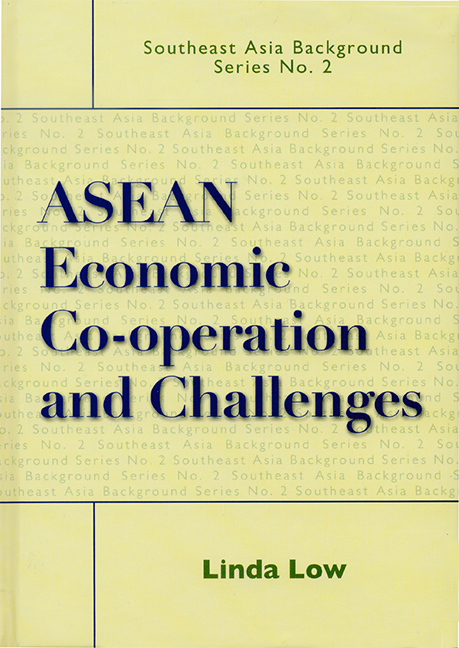3 - Investment and Industrial Co-operation
Published online by Cambridge University Press: 21 October 2015
Summary
INTRODUCTION
Chapter 2 explained the theory and empirical evidence of how trade co-operation is effected first through the ASEAN Preferential Trading Arrangement, progressing to the ASEAN Free Trade Area including the ASEAN Framework Agreement for Services. More intra-ASEAN investment is vital to increase intra-ASEAN trade which is the subject of this chapter. Intra-ASEAN investment is part and parcel of ASEAN's need to attract direct foreign investment from the rest of the world. As a group of developing and newly industrializing economies, tapping direct foreign investment and multinational corporations is imperative not just for capital infusion. More vital is the role of direct foreign investment and multinational corporations for technology transfer and other management resources, skills, markets, branding and overall linkage with the global economy.
INVESTMENT REGIME IN ASEAN
The ASEAN region is a leading recipient of direct foreign investment flows in the developing world. Between 1990 and 1997, direct foreign investment represented an annual average of 40 per cent of the net resource flows to the ASEAN countries, with Malaysia, Myanmar and Vietnam accounting for more than 50 per cent of direct foreign investment composition. A high percentage of direct foreign investment to net private capital flows in the 1990s is almost the norm for many developing countries, and this is true for ASEAN. This suggests the increasing importance of net private capital flows, particularly direct foreign investment, to official flows for development finance.
Five ASEAN countries were among the top 20 developing country recipients of such long-term global capital flows from 1997 to 1998. Between 1993 and 1998, ASEAN received about 17.4 per cent of the US$760 billion in cumulative global net direct foreign investment flows to developing countries. Over the same period, ASEAN received an annual average of US$22 billion in net direct foreign investment flows, compared with an annual average of US$7.8 billion in the period between 1986 and 1991. Direct foreign investment flow in ASEAN increased on average by about 14 per cent annually from 1996 to 1998, while direct foreign investment stock in ASEAN grew tenfold from US$23.8 billion in 1980 to US$233.8 billion in 1998.
- Type
- Chapter
- Information
- ASEAN Economic Co-operation and Challenges , pp. 31 - 44Publisher: ISEAS–Yusof Ishak InstitutePrint publication year: 2004



